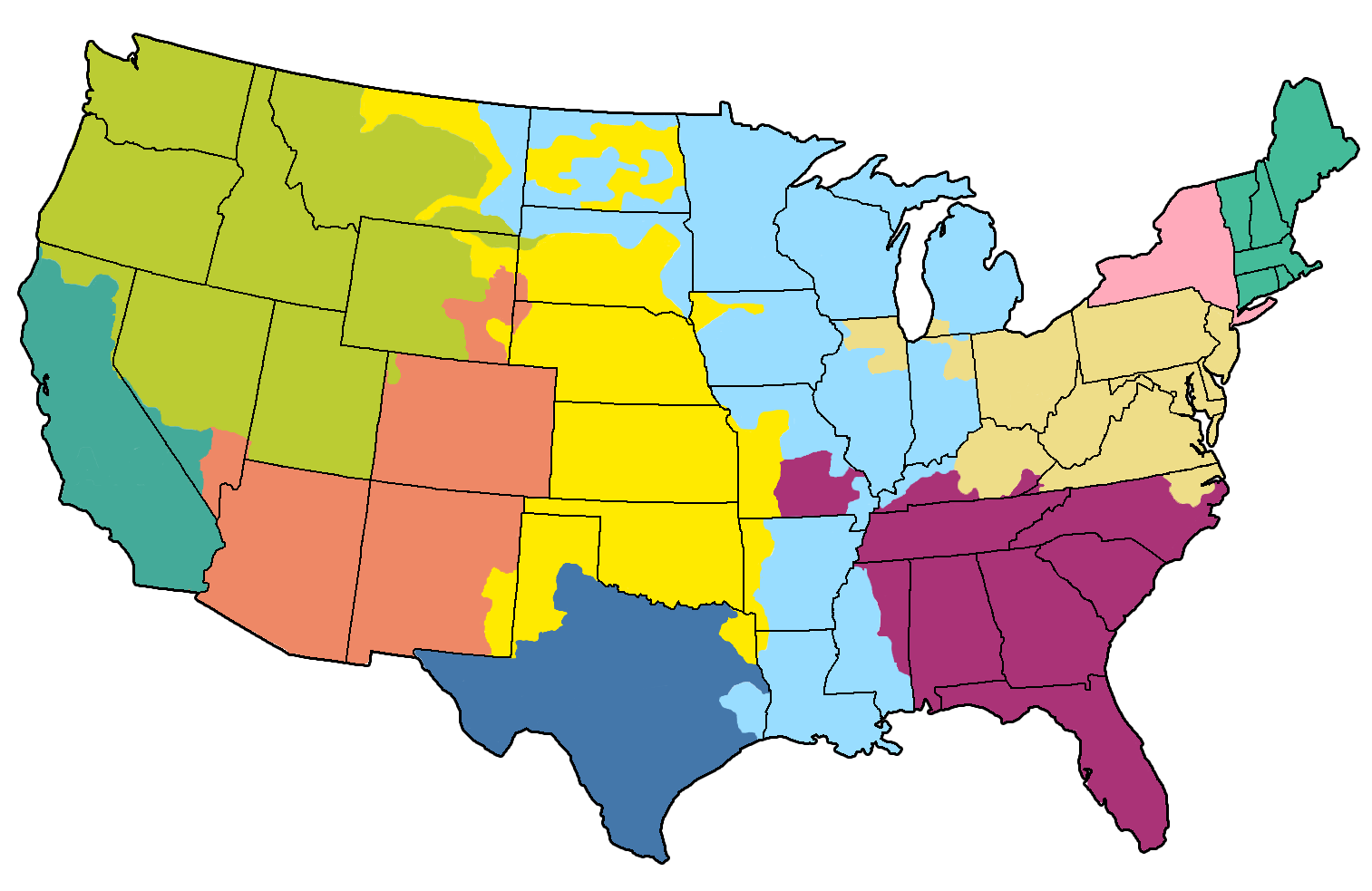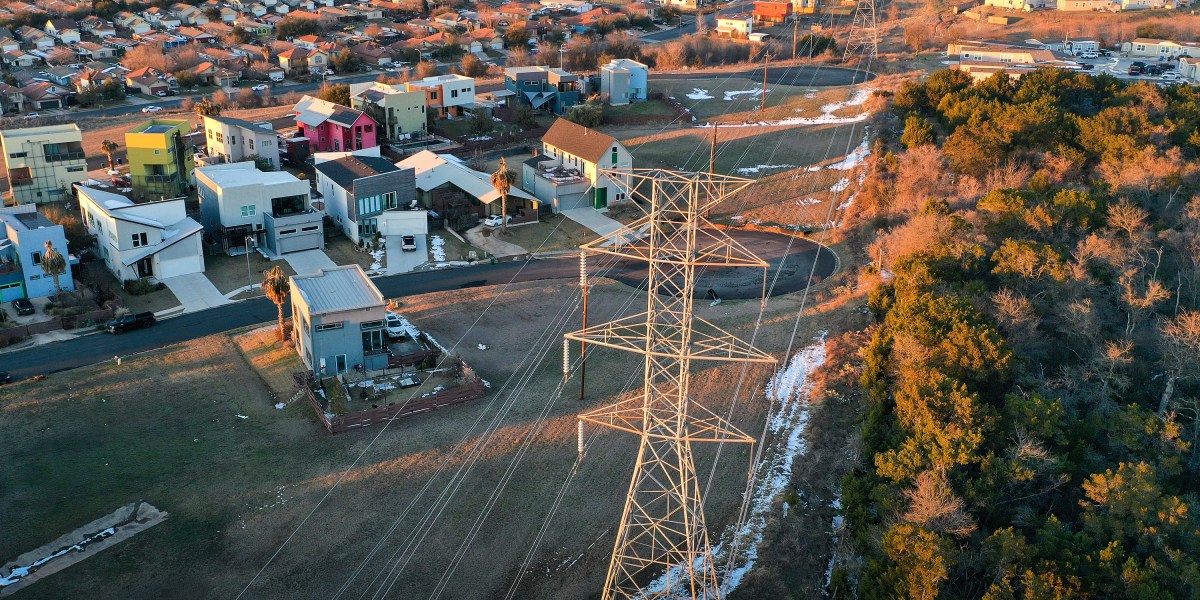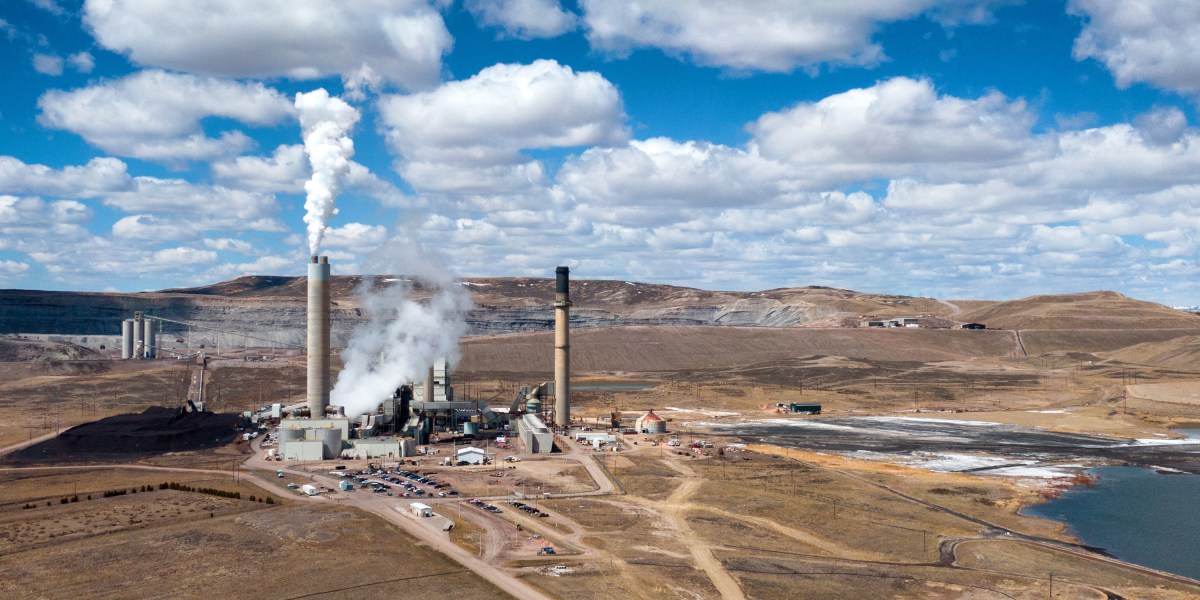Stitching together the grid will save lives as extreme weather worsens
The blistering heat waves that set temperature records across much of the US in recent days have strained electricity systems, threatening to knock out power in vulnerable regions of the country.
The electricity has largely stayed online so far this summer, but there have been scattered problems and close calls already.
Heavy use of energy-sucking air-conditioners is the biggest problem. But intense heat can also reduce the output of power plants, blow transformers, and force power lines to sag. Severe droughts across large parts of the country have also significantly reduced the availability of hydroelectric power, according to the North American Electric Reliability Corporation (NERC).
It’s unlikely to get better soon. A number of grid operators may struggle to meet peak summer demand, creating the risk of rolling blackouts, the NERC report notes.
The nation’s isolated and antiquated grids are in desperate need of upgrades to keep the lights, heat, and air-conditioning on in the midst of extreme weather events that climate change is making more common, severe, and dangerous. One clear way to ease many of these issues is to more tightly integrate the country’s regional grids, stitching them together with more long-range transmission lines.
If electricity generated in one area can be more easily shared across much wider regions, power can simply flow to where it’s needed at those moments when customers crank up air-conditioners en masse, or when power plants or fuel supply lines fail amid soaring temperatures, wildfires, hurricanes, or other events, says Liza Reed, a research manager focused on transmission at the Niskanen Center, a Washington, DC, think tank.
The problem is it’s proved difficult to build more long-range transmission and grid interconnections for a variety of reasons, including the permitting challenges of erecting wires through private and public lands across cities, counties, and states and the reluctance of local authorities to forfeit control or submit to greater federal oversight.
The case of Texas
The unreliability of the US grid is not a new problem. Severe heat and winter storms have repeatedly exposed the frailty of electricity systems in recent years, leaving thousands to millions of people without power as temperatures spiked or plunged.
One of the fundamental challenges is that the grids today are highly fragmented. There are three main electricity networks within the US: the Eastern Grid, the Western Grid, and the Electric Reliability Council of Texas (ERCOT). But there are numerous regional transmission organizations within those first two systems, including the California Independent System Operator, Southwest Power Pool, PJM Interconnection, New York ISO, and more.
These grids form a complex web of networks operating under different regulators, rules and market structures, and often with limited connections between them.


ERCOT is especially isolated, in part because of the desire among local politicians, citizens, and power companies to avoid added competition, the hassle of following other states’ rules, and oversight from the Federal Energy Regulatory Commission (FERC). But the state offers a case study in why that can be a serious problem amid increasingly harsh climate conditions, Reed says.
The Texas grid operator pleaded with customers several times earlier this month to cut electricity use as blistering summer temperatures created demand surges that threatened to outstrip supply and require rolling blackouts. Low wind conditions, cloud cover, and outages at fossil-fuel power plants added to the strains.
Shutting off the electricity needed to run air-conditioning in triple-digit temperatures creates very real dangers, putting people at risk of heat exhaustion, heatstroke, and death.
While it was a near miss this month, Texas’s power sector and residents weren’t as fortunate last winter. A severe storm in early 2021 set off a cascading series of system failures that shut off electricity for around 4 million residents, as well as water and heat for many. Hundreds of people died.
An analysis last year by Grid Strategies, a power sector consulting firm, noted that the grid operator was only able to import about 1,200 megawatts of electricity on the days around the storm, mainly from Southwest Power Pool, which manages the grid and power market in the central US. Meanwhile, the more tightly connected Midcontinent Independent System Operator, subject to similar weather conditions across the southern part of its service area, was able to import 15 times as much power from sources including PJM, the Tennessee Valley Authority, and other regional operators.
Grid Strategies noted in a separate report that transmission lines capable of carrying an additional gigawatt of electricity would have saved $1 billion in electricity costs. That’s because wholesale electricity costs, which usually run in the low-to-mid double digits, soared to $9,000 per megawatt-hour during the storm. (The average US homeowner consumes a little less than a megawatt-hour a month.)
To be sure, other regions are in need of improved connections as well. In the summer of 2020, the California Independent System Operator was forced to institute rolling outages during a severe heat wave.
While it was able to import enough electricity to prevent the problems from spiraling, it couldn’t tap into available capacity to the north because of a damaged transmission line in the Pacific Northwest. It was also unable to take advantage of ample wind resources from Southwest Power Pool because the interconnection between those systems had such limited capacity, the Grid Strategies report notes.
Other benefits
There are numerous other grid upgrades required to cut greenhouse-gas emissions and reduce the dangers from extreme events. We’ll need to build far more clean electricity plants and energy storage projects, modernize the way grids monitor and match up minute-by-minute variations in supply and demand, fortify local distribution networks, and create more effective means of encouraging or requiring consumers to reduce demand at key moments, among much else.
But there are multiple benefits to building more long-range transmission lines across the nation and taking other steps to weave the nation’s grids together more tightly.
Studies have found it can reduce overall system costs and electricity prices, because grid operators can tap into the cheapest sources in a larger pool of options. Plus, it means fewer local power plants need to be built.
It also makes it possible for grids to rely on a larger share of electricity from fluctuating sources like wind and solar. Regional grids can draw on more renewable electricity options across the country and rely upon them for more hours of the day, by switching between far-flung wind, solar, hydro, or geothermal sources that may peak and ebb at different times and seasons.
Increasing transmission capacity across larger regions also adds economic incentives to build more solar and wind power, as it provides connections to customers in population centers and reduces the need to curtail output at times when supply is otherwise outstripping local demand.
How do we build more?
So how do we get over the hurdles that have prevented the development of greater interconnections and more transmission lines?
The $1 trillion infrastructure bill, which President Joe Biden signed into law in late 2021, included a few potentially helpful provisions: dedicating billions of dollars to build transmission projects, creating a revolving loan program, and granting FERC more latitude in pushing along projects that promise to alleviate transmission constraints.
This week, the board of the Midcontinent Independent System Operator approved spending more than $10 billion on 17 transmission projects stretching wires across the US Midwest.
Other legislative proposals are under consideration.
Following a surprise breakthrough on Wednesday, the pending federal spending package now includes hundreds of billions of dollars for clean energy-related projects. It also creates “commonsense permitting reforms that will ensure all energy infrastructure, from transmission to pipelines to export facilities, can be efficiently and responsibly built,” according to a statement from Senator Joe Manchin, who had been the major holdup on climate-related measures.
In early July, Congressman Sean Casten of Illinois and others introduced a package of bills designed to bolster the resilience of the country’s grids. One would require FERC to issue a rule establishing “minimum capability requirements between transmission planning regions,” specifically to help reinforce grids against the growing dangers of extreme weather.
In an interview, Casten stressed that the US needs to upgrade its power systems to accommodate a coming surge in demand as more and more people and businesses rely on electricity to charge vehicles and heat buildings.
“We’re going to need a massive amount of new generation, and against that, climate change is making it harder and harder for the grid to even meet the current [demands],” Casten said. “Huge increases in electricity loads will make the grid even more brittle if we don’t find a better way to utilize the connections between them.”
Transmission researchers and advocates have highlighted additional ways to potentially speed up projects, including building transmission lines along highways, rail lines, and other areas where rights-of-way are already in place.
There are also technical means of increasing the electricity that can flow from one place to another, including simply replacing low-capacity wires with higher-capacity ones. One startup, VEIR, is developing ways to push more electricity across longer distances within narrow rights-of-way, using high-temperature superconducting tape and novel cooling techniques.
All of these things could help, though none are likely to unleash the massive investments and radically streamlined approvals that are now arguably needed to overhaul and interconnect the nation’s grids.
Local political realities
The technical promises from greater grid connections don’t mean all that much if they aren’t politically feasible, says Carey King, assistant director at the Energy Institute at the University of Texas at Austin.
It can easily take a decade to approve a long-distance line just about anywhere today, which dramatically inflates the costs and delays any benefits. And in Texas, local leaders and electricity businesses are fiercely resistant to the idea of integrating with other grids and having to abide by another state’s market rules, King and others say.
Instead, the power sector there will likely need to repair and replace aging power plants, winterize critical infrastructure, potentially invest billions into natural-gas facilities reserved for emergency use, and build a lot more energy storage, among much else.
Much of that is also hard to do, however, in Texas’s loosely regulated “electricity-only market,” which pays operators only for the power they generate. That structure clearly hasn’t sent the right signals to incentivize the investments now required to bolster the state grid as climate change accelerates.
For now, Texas is still choosing to go it alone. But the benefits of increasing power connections will likely continue to become clearer there and elsewhere as heat waves, floods, wildfires, and storms continue to strain grids, putting lives and health at risk.




